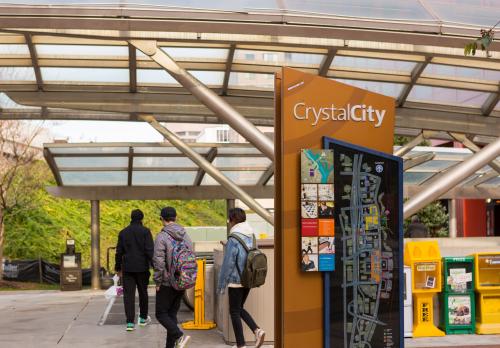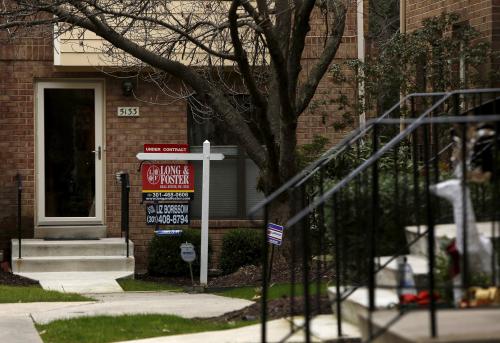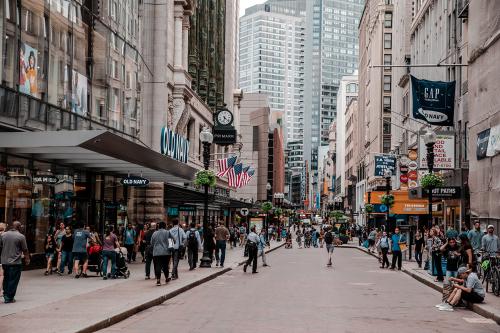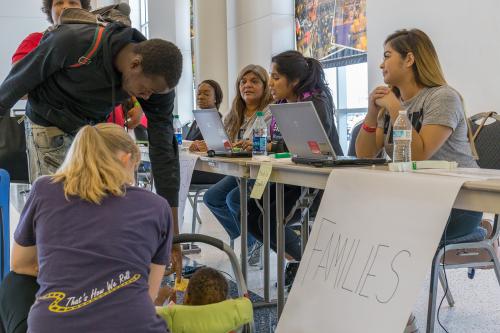The economics of sports stadiums generates intense debate. Governors and mayors woo team owners with free land and tax breaks. Some local residents champion the arrival of new teams, others organize to protest anticipated traffic congestion and public safety concerns. Economists debate whether the public benefits from sports franchises—including jobs, local tax revenue from increased spending and property values—offset the associated costs to local governments.
As team owners weigh the pros and cons of various locations, one complicated factor is the role of gender: Are optimal stadium locations different for men’s and women’s sports? The U.S. has two professional team sports with both men’s and women’s leagues: basketball and soccer. Comparing the locations of the nation’s respective professional basketball and soccer leagues, NBA, WNBA, MLS, and WPS teams within the same metropolitan areas shows that stadium locations do indeed vary by gender—which carries both financial and symbolic consequences.
Can you shoot from downtown if you play in the ‘burbs?
In metropolitan areas with both men’s and women’s teams, men’s arenas are generally located closer to city centers, while women’s teams often play in more distant suburbs. All NBA teams in the sample metro areas play within a few miles of the city center (Figure 1). In only four of these metro areas, the WNBA team shares the NBA team’s stadium. But in most cases, the WNBA arena is located farther from the city center. Both MLS and WPS arenas are more decentralized than NBA arenas, with women’s soccer teams having the highest average distance to city centers.

Breaking out arena locations by metro area shows some additional patterns (Figure 2). Both WNBA and WPS teams are more than 20 miles from the city center in the New York metro area—notable for its high real estate costs. WPS teams in Atlanta, Seattle, and Washington, D.C. also play more than 20 miles from the city center. One outlier to the gender split is Boston: the women’s soccer team plays in Harvard University’s Soldiers Field stadium, less than five miles from downtown Boston, while the men play in the much larger, more modern, and more prestigious Gillette Stadium in Foxborough, about 20 miles from downtown.

People move to the suburbs for cheaper rent. So do sports teams.
Suburban stadium locations offer three potential economic advantages for WNBA and WPS teams.
Save on rent. The dominant reason for playing in suburban locations, usually in smaller arenas, is to save money. Whereas men’s professional basketball is a highly lucrative industry, the WNBA continues to struggle financially. Women’s soccer, on the other hand, has in some years been more profitable than the men’s league. The New York Liberty originally played in the storied Madison Square Garden before relocating to the Westchester Community Center in suburban White Plains. The Washington Mystics have also recently moved from the Capitol One Center, which they shared with the Wizards, Capitals, and the Georgetown Hoyas, to a new facility at St. Elizabeth’s East, in an area of the District with much lower rent.
Follow the fans. Like movie theaters and art galleries, sports teams try to choose locations that are convenient and appealing to their fans. Demographic differences across fan bases suggest some variation in optimal location for different sports. Notably, women’s sports are perceived as more family-oriented and “cleaner” than men’s leagues. Both male and female athletes are viewed as inspiring role models. Women and girls make up 75 percent of WNBA ticket-buyers. Attendance at WPS games skews towards pre-teen and teenage girls, and largely white demographics typical of many suburban areas.
Pack the stands. Matching the venue size to expected attendance may provide a better experience for both players and fans. WNBA games attract fewer than 8,000 fans on average per game, less than half the number at average NBA games. Women’s soccer drew an average 6,000 fans per game in 2018. Playing in smaller venues—and thus limiting the number of tickets available—may allow some teams to increase ticket prices. Half-empty arenas may discourage players (especially the home team) and diminish the quality of their performance.
Beyond the economic rationale, the spatial patterns of stadium locations echoes gender stereotypes that drove 20th century urban design.
Yes, sports teams are businesses. But the symbolism matters too.
Beyond the economic rationale, the spatial patterns of stadium locations echoes gender stereotypes that drove 20th century urban design. Men worked downtown while women were expected to find domestic bliss in residential suburbs. Access to prestigious downtown arenas may be less important than other gender disparities in sports, such as pay, TV coverage, dress codes, and even officiating practices. But to the young fans watching and attending, it reinforces the fact that women athletes have not yet achieved equal status.
Thanks to David Harshbarger for outstanding research assistance.
The Brookings Institution is committed to quality, independence, and impact.
We are supported by a diverse array of funders. In line with our values and policies, each Brookings publication represents the sole views of its author(s).







Commentary
When it comes to sports, men and women don’t play on the same fields
March 25, 2019